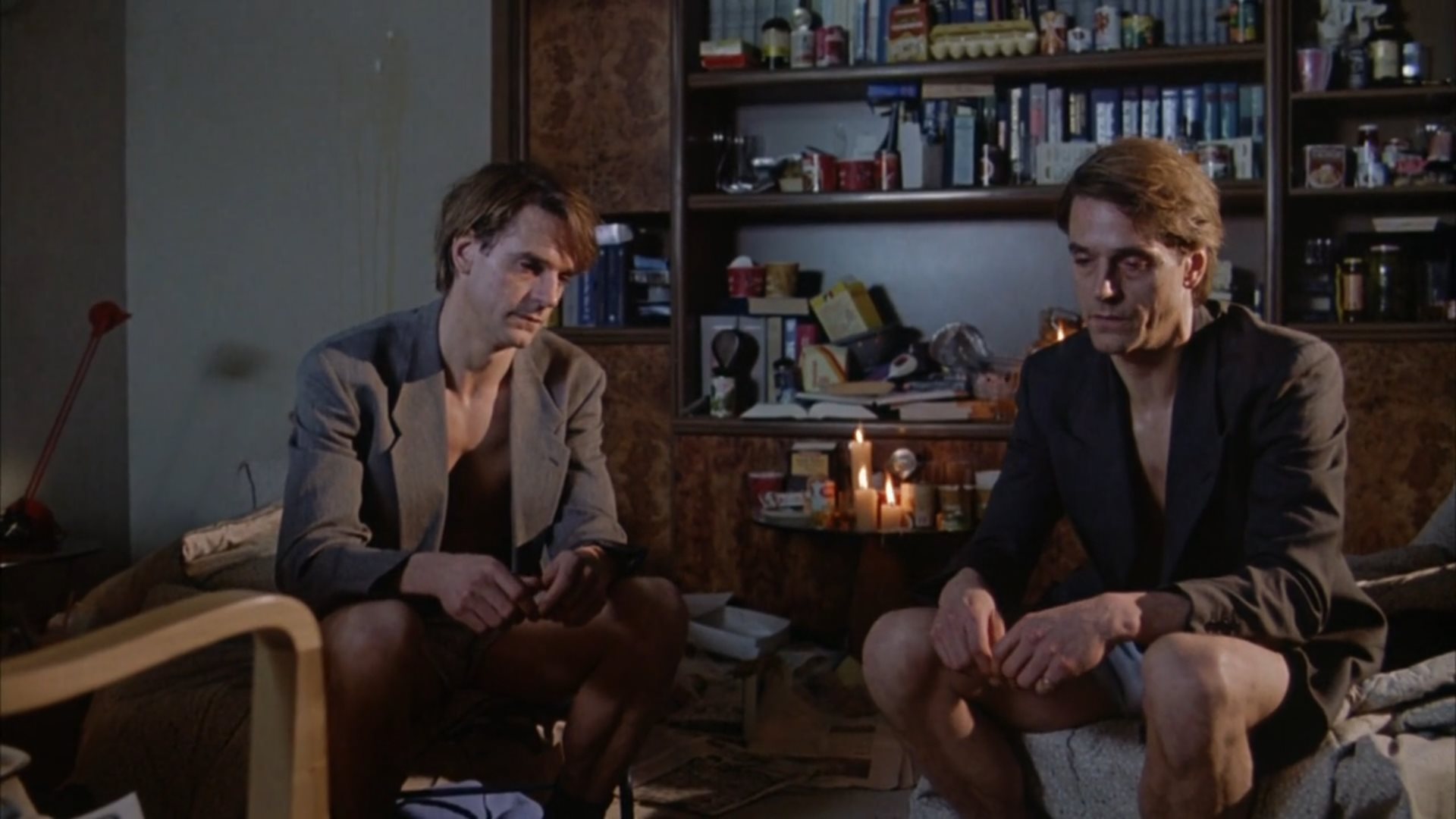Let’s celebrate David Cronenberg’s birthday by immersing ourselves in the uncanny, gruesome, and occasionally dreamlike psychological horror universe of Dead Ringers (1988). As the master of the Body Horror genre, Cronenberg always intertwines physical collapse with psychological disintegration in a way that unsettles the psyche. All of this is simultaneous with the unfolding of his characteristic fascination with the human body and the ghastly ways in which it can be corrupted for the purpose of symbolically exploring themes of alienation, repressed fears, and the mind-body duality.
The uncanny theme of the double is hypnotically crystallised through the dual role of Jeremy Irons, who plays Beverly and Elliot, twins with the same profession and sources of distress, as well as substantial character differences and taste. Irons manages to breathe life into two striking gynaecologists with an unusual bond, offering an impressive, complex portrayal of each character’s dynamic inner and outer self as they eventually spiral down into psychological disintegration and insanity. It is even more impressive taking into account the psychopathology of the twins, who exhibit tendencies compatible with narcissism and covert narcissism. The actor’s brilliance is essential: Whilst to other characters the twins have to sometimes appear indistinguishable from each other (making it possible for them to present themselves as the other in some situations), as a viewer, you have to perceive their separate external traits and mannerisms – and you often do, even if they can be very subtle at times, reflected in slight gestures.
“Pain creates character distortion.” Bev is a tortured, anxious, neurotic, research-obsessed spirit who does all the behind-the-scenes work, whilst Elliot is the sociable, arrogant, emotionally detached twin who takes care of their public image. Elliot has a polished, outwardly narcissistic persona beneath which one can find both pity and fascination for Bev’s raw self, who is consumed by his addictions. At the same time, there are mutual signs of human feelings of jealousy within their transcendental, paradoxically narcissistic love for each other. Their psychological configuration can be linked with trauma-induced hysteria, their underlying motivation being the challenging pursuit of wholeness, of single unity. There is a duality in terms of their desire for symbiosis which clashes with their desire for detachment from the other. Their mutual interest Claire’s body becomes the maternal body, the third uncanny “other” which houses the twins in Beverly’s Siamese nightmare – a scene revealing his anxiety at the haunting thought of separation from his brother, but also from the womb. The ‘abnormal’ nature of the womb, which represents a fascinating and tantalising pull for the gynaecologists, also becomes a source of unease, due to Bev’s displacement of his dread of separation and symbolic castration onto the female body.
Bev’s disturbing uncanny dream reflects the uncanny, intimate connection of the twins – which is sometimes attributed mystical connotations. There is a mutual understanding and undefined fear between them, which reflects the fear of the unknown, of the other. Elliot strangely adds that “Whatever’s in his bloodstream goes directly into mine. […] Beverly and I just have to get synchronised. Once we’re synchronised, it’ll be easy.” Everything feels safe as long as their connection is predictable. In the end, in a way that aligns with tendencies in narcissistic relating, their personality morphs into the other, and inner chaos is unleashed, which leads to annihilation of the Other – as well as a symbolic self-annihilation. Bev seems to have absorbed Elliot’s personality- destroying him can be interpreted as an act of possession and of both self-love and self-loathing. The subtext of the narrative revolves around the integration of the other, as a solution following the rejection of the identification with the reflection of inner parts that have been alienated.
By embracing the grotesque through his characteristic film genre, Cronenberg reaches beyond the flesh towards a corruption of the spirit in a traumatic process of unravelling. Although the cold, clinical approach of the film can be alienating for some viewers, its unsettling subject matter, medical setting, and provocative narrative are effective in producing strong responses, whilst allowing space for fascination.

